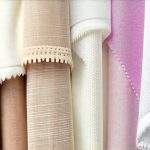Pelvic discomfort is a surprisingly common experience, impacting individuals across demographics and lifestyles. Often dismissed as simply “part of life,” chronic pelvic pain, irritation, or sensitivity can significantly diminish quality of life. While many factors contribute to these issues – from anatomical variations and hormonal shifts to underlying medical conditions – one often overlooked aspect is the clothing we choose to wear. Tight, restrictive garments, synthetic fabrics that don’t breathe, and even seemingly innocuous everyday choices can exacerbate pelvic floor dysfunction, irritate sensitive skin, or generally create an environment where discomfort thrives. This article will explore the benefits of natural clothing materials for promoting pelvic comfort, focusing on how fabric choice impacts well-being and providing practical guidance for building a more comfortable wardrobe.
The pelvic region is incredibly sensitive, housing vital organs and a complex network of nerves, muscles, and ligaments. The skin in this area is often thinner and more prone to irritation than elsewhere on the body. Therefore, clothing that allows for airflow, doesn’t chafe or restrict movement, and avoids harsh chemicals is crucial. Natural fibers offer a superior alternative to synthetic materials, which can trap moisture, contribute to bacterial growth, and lack the inherent breathability needed for optimal pelvic health. Understanding the properties of different natural fabrics empowers us to make informed choices that support our bodies rather than hinder them.
The Power of Breathable Fabrics
The cornerstone of pelvic comfort lies in breathability. Synthetic materials like polyester, nylon, and acrylic are notorious for trapping heat and moisture against the skin. This creates a breeding ground for bacteria and yeast, potentially leading to irritation, inflammation, or even infections. Conversely, natural fibers allow air to circulate freely, wicking away sweat and maintaining a cooler, drier environment. This is particularly important in the pelvic region, which is naturally prone to sweating and can be easily irritated by moisture. Choosing breathable fabrics doesn’t just prevent discomfort; it promotes overall skin health and reduces the risk of complications. For more on creating a comfortable lifestyle, explore these simple daily habits.
Consider the difference between wearing tight synthetic leggings during exercise versus loose-fitting linen shorts. The synthetic leggings will likely leave you feeling hot, sweaty, and potentially chafed, while the linen shorts allow for airflow, keeping you cool and comfortable even during strenuous activity. This same principle applies to underwear, trousers, and any garment that comes into close contact with the pelvic region. Natural fibers aren’t just about avoiding negative effects; they actively support comfort and well-being.
Fabrics like cotton, linen, hemp, silk, and wool (specifically merino) all offer varying degrees of breathability. Each has its own unique properties and benefits, making it important to choose the right fabric for your needs and lifestyle. We’ll delve deeper into these options shortly, but understanding that breathability is paramount is the first step towards a more comfortable experience.
Understanding Fiber Properties
Different natural fibers possess distinct characteristics that make them suitable for various applications. Cotton, perhaps the most widely used natural fiber, is known for its softness and absorbency. However, conventional cotton can be treated with pesticides and chemicals during cultivation, which may irritate sensitive skin. Organic cotton provides a safer alternative, minimizing exposure to harmful substances. Linen, derived from flax plants, is incredibly strong, durable, and highly breathable – making it an excellent choice for warmer climates or active lifestyles. It does wrinkle easily, but many appreciate its natural texture and relaxed aesthetic.
Hemp, often touted as a sustainable option, boasts exceptional strength and breathability, even surpassing cotton in some respects. It’s naturally resistant to mildew and UV rays, offering added protection. Silk, renowned for its luxurious feel, is surprisingly strong and breathable, although it requires more delicate care. Merino wool, unlike traditional wool, is incredibly soft and fine, making it comfortable against the skin even in warmer weather. Its natural wicking properties effectively draw moisture away from the body, keeping you dry and comfortable. To learn more about choosing the right fabrics, see these fabric choices for pelvic ease.
- Choosing organic versions of cotton or linen minimizes chemical exposure.
- Consider the climate and your activity level when selecting a fiber.
- Look for blends that combine the benefits of different materials (e.g., cotton/linen blend).
The Importance of Gentle Underwear Choices
Underwear is arguably the most critical garment concerning pelvic comfort. Synthetic underwear, particularly tight-fitting styles, can constrict blood flow, irritate sensitive skin, and contribute to pelvic floor dysfunction. Prioritize natural fiber underwear – organic cotton or silk are excellent choices. Avoid lace trim or embellishments that could cause friction or irritation. Seamless designs minimize chafing, while looser fits allow for better airflow. Consider the impact of clothing on men’s flow with clothing choices for men.
When selecting underwear, consider the following:
1. Avoid thongs and overly tight briefs, which can put pressure on the pelvic floor.
2. Opt for full-coverage styles made from soft, breathable fabrics.
3. Change your underwear regularly to maintain hygiene and prevent moisture buildup.
Choosing the right underwear isn’t merely about comfort; it’s about respecting the delicate anatomy of the pelvic region. Investing in high-quality natural fiber underwear can make a significant difference in your overall well-being.
Beyond Underwear: Clothing Choices for Everyday Life
The benefits of natural fabrics extend far beyond underwear. Trousers, skirts, and even dresses should be chosen with pelvic comfort in mind. Avoid tight-fitting jeans or leggings that restrict movement and put pressure on the pelvic floor. Instead, opt for looser styles made from breathable materials like linen, hemp, or organic cotton. Skirts and dresses allow for maximum airflow, while wide-leg trousers provide both comfort and style.
Consider these points when building a comfortable wardrobe:
* Layering allows you to adjust your clothing to different temperatures and activities.
* Choose garments with elastic waistbands that aren’t overly tight.
* Pay attention to seam placement – avoid seams that rub or chafe in sensitive areas.
* When exercising, prioritize moisture-wicking natural fabrics like merino wool or organic cotton blends.
Ultimately, the goal is to create a wardrobe that supports your body and promotes comfort throughout the day. Don’t hesitate to experiment with different fabrics and styles until you find what works best for you. Remember, small changes can make a big difference in your overall well-being. For those seeking further guidance on building a comfortable wardrobe, these clothing choices for pelvic relief are invaluable.
Furthermore, integrating natural evening routines can enhance overall pelvic well-being; explore evening routines for full pelvic unwinding to support a holistic approach to comfort.





















